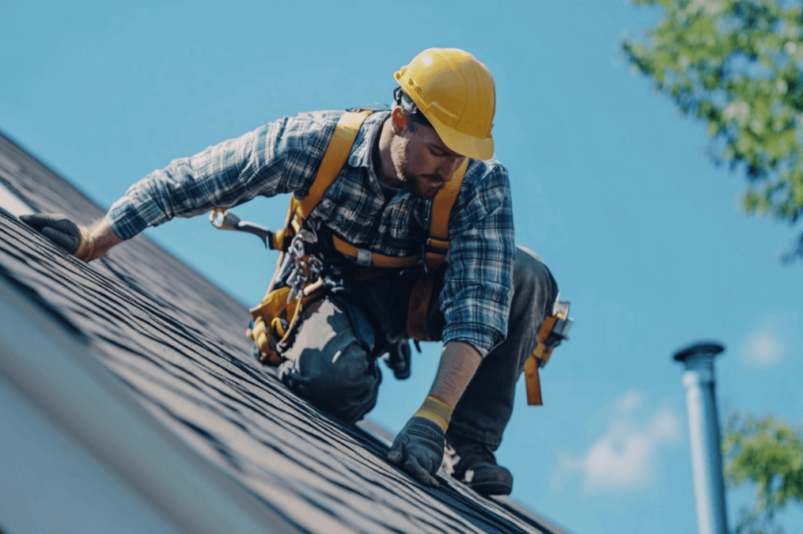
When it comes to roofing, there’s no room for cutting corners. You need the right tools for the job, and roof jacks are one of those tools that sometimes fly under the radar. Whether you’re laying shingles on a brand-new roof or patching up a leaky one, roof jacks can sometimes be the heroes of the job. Without them, working on a sloped roof would be a whole lot riskier—and slower.
Roof Jacks 101
So, what exactly is a roof jack? In simple terms, it’s a sturdy, metal bracket that attaches to a sloped roof and supports a platform, giving roofers a safe place to stand. Most roof jacks are made from steel or aluminum, designed to hold up under tough conditions. You’ll find them on just about any sloped roof project, whether it’s a gentle incline or a steep pitch. Roof jacks keep you stable, and that stability means faster, safer work, especially on tricky angles.
How Roof Jacks Work
Roof jacks aren’t complicated, but they’re a game-changer when it comes to working on sloped roofs. Their main purpose is to give you a stable platform to stand on while you work. Think of them as temporary scaffolding—except they’re attached directly to the roof. You start by selecting the right size roof jack based on the pitch of the roof you’re working on. Roof jacks come with slots for standard 2×6 or 2×8 planks, which fit snugly in place to form your working platform.
You’ll need to attach them directly to the roof with long nails, driven into the rafters to ensure they’re securely fastened. You don’t want to just drive those nails into the shingles or plywood—they need to go into the structure of the roof. Place the jacks evenly across the roof, spaced apart based on your comfort and the length of the plank. Once they’re set, you slide the plank into place, giving you a flat surface to stand on while you work.
Think about standing on a steep, slippery slope without any stable footing—it’s nearly impossible. With roof jacks, it’s like having a ladder on the roof that lets you move around confidently and safely.
When you’re done, the jacks can be removed by pulling the nails, leaving only small holes, which can be patched easily. Just make sure the plank is clear of debris before stepping on it. Your safety should always be the biggest priority in your mind, and roof jacks are there to make sure of that.
Types of Roof Jacks
Roof jacks come in a few different styles, each suited for specific roofing tasks and conditions. Here are the most common types you’ll encounter:
- Slip-On Roof Jacks: These are the most basic and commonly used roof jacks. They slip onto the shingles and get nailed directly into the roof. The nails secure the jack into place, creating a stable anchor for the plank. They’re easy to install and remove, which makes them ideal for most roofing jobs.
- Screw-On Roof Jacks: As the name suggests, these jacks get screwed directly into the roof instead of nailed. They provide a stronger, more secure hold, which is useful for longer projects where the jacks will stay in place for an extended period of time. However, they leave larger holes that need more attention when removed.
- Adjustable Roof Jacks: These are designed to work on roofs with varying pitches. If you’re working on a roof that changes slope or you don’t know the exact pitch beforehand, these jacks can be adjusted to fit the angle. They’re a little more expensive but worth the investment for jobs with inconsistent slopes.
When choosing a roof jack, it’s important to consider the weight capacity and roof pitch. If you’re working on a steeper roof, you may need additional support or more jacks to distribute the load evenly. Also, be sure to check for rust or wear, especially if you’re using them on more than one job site. Rusted roof jacks can become weak and unreliable over time, putting you at risk.
Why Roof Jacks Are Essential for Safety
Roofing is dangerous work, and roof jacks are one of the best ways to minimize the risk. They provide a solid, secure platform that prevents slipping and helps you maintain balance while working on steep pitches. Without them, you’re relying solely on your footwear and balance, which can be dicey when you’re navigating uneven surfaces or handling heavy materials.
Roof jacks act as a second pair of hands, holding your tools and supplies while you work. They let you focus on the task instead of worrying about where your foot will land next. The added stability reduces fatigue because you’re not constantly fighting gravity or adjusting your stance to stay upright. This kind of support is crucial when you’re on the roof for long stretches of time.
Safety isn’t just about preventing falls—it’s about creating an environment where you can work efficiently without distractions. Roof jacks give you the peace of mind to focus on doing the job right, without the constant fear of losing your footing.
Installing Roof Jacks Properly
Proper installation is key to getting the most out of your roof jacks. Here’s a step-by-step breakdown to ensure your setup is safe and effective:
- Choose the Right Size Jack: Start by selecting the right roof jack for the pitch of your roof. You’ll want one that fits the angle you’re working on. Most roof jacks come labeled for specific pitches, so pay attention to that when choosing.
- Locate the Rafters: Before you nail the jack into place, find the rafters under the shingles. These are the structural beams that give the roof its shape. Your roof jack needs to be anchored into these for maximum support.
- Position the Roof Jack: Slide the roof jack under the shingles or over the top, depending on the type you’re using. Make sure it’s aligned with the rafter below.
- Nail It Securely: Use long nails to drive the jack into the rafter. Be generous with the number of nails—you want it to hold steady. Three or four nails should be enough to secure each jack.
- Repeat for Each Jack: Space your roof jacks evenly across the roof. The spacing will depend on the length of the plank and your comfort level. Usually, one every 4 to 6 feet works well.
- Insert the Plank: Once the jacks are nailed in, slide a 2×6 or 2×8 plank into the slots on the jacks. Make sure the plank sits flat and isn’t warped. Check for stability before stepping on it.
- Safety Check: Give everything a once-over to ensure it’s secure. Push down on the plank and check for any give in the jacks. If everything feels solid, you’re good to go.
Don’t Skip the Roof Jacks
Roof jacks might not be the flashiest tool in your arsenal, but they’re one of the most important when it comes to working on sloped roofs. In the Texas heat, where roof work is grueling enough, the last thing you want is to feel unsafe. Whether you’re laying down new shingles or handling a full roof replacement, make roof jacks your go-to tool for safety. They’re not just for rookies—they’re for anyone who values getting home in one piece after a long day on the roof.





